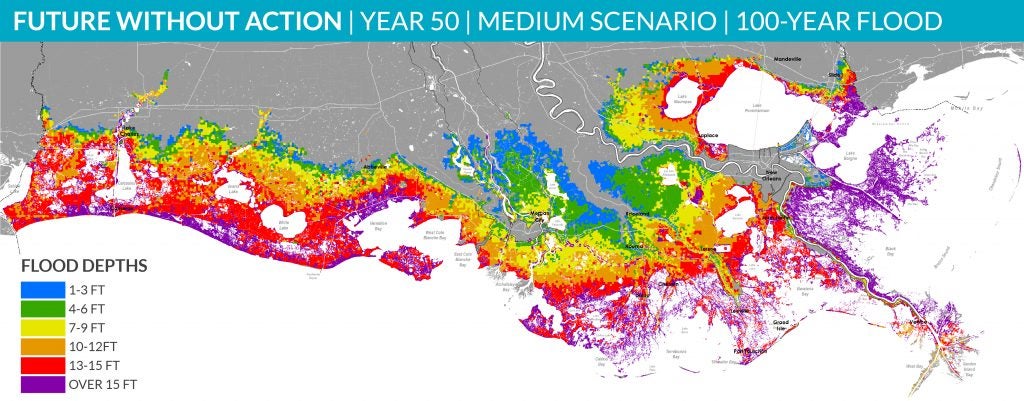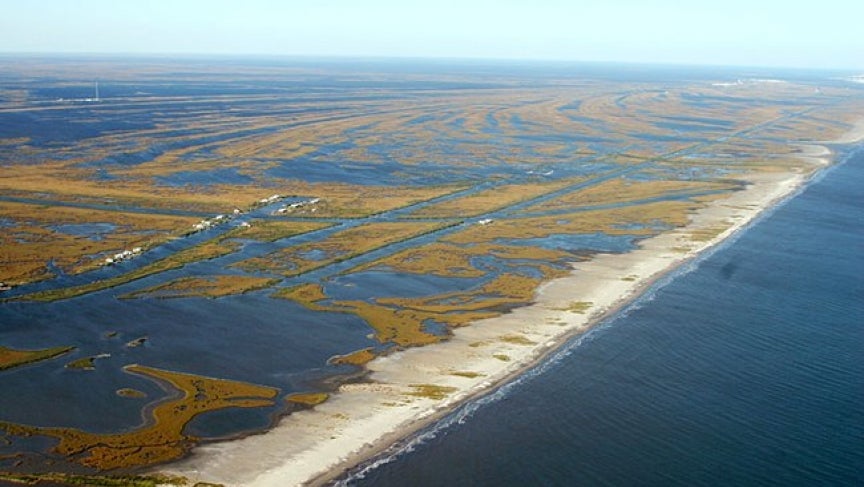Ecosystem restoration planning has traditionally been based on a desire to restore a system to some historic condition – even as conditions are constantly evolving because of climate change. Rather than planning for the future, we often look back at what the system once was and try to replicate it. But in a rapidly changing world, this model is not sustainable.
A paradigm shift, from restoration projects that solve past problems to those which address future conditions, is necessary if we’re to continue living in coastal areas.
Where I work in Louisiana, the Mississippi River Delta is facing an ongoing land loss crisis, due to a host of man-made and natural causes that is further exacerbated by the increasing effects of climate change.
To face this challenge, my Restore the Mississippi River Delta coalition colleagues and I, in collaboration with Tulane University, University of New Orleans and The Water Institute of the Gulf, began an effort to improve the future performance of coastal restoration projects. We started by identifying approaches and investment opportunities that support the long-term viability of the ecosystem – and the communities and industries that depend on it.
It’s our hope that this work will help Louisiana and other coastal areas around the country better plan for the future.
Louisiana’s future without action
Louisiana’s 2017 Coastal Master Plan is the state’s 50-year, $50-billion blueprint for coastal restoration and protection efforts. Under the plan, projects were selected based on their ability to build land and reduce risk to coastal communities.
Why coastal communities must plan for the future instead of planning from the past. Share on XThe goal is to create and sustain as much land as possible in areas where land existed in the past. But the future sustainability of the marsh creation projects were not evaluated for how they might perform as part of a system of synergistic projects.
To help improve this process for the next iteration of the plan, our team of experts is currently reviewing data generated from the plan’s “future without action” scenario – a prediction of what the coast will look like if we do nothing to restore it.
This review will help us determine the causes of land loss in the model simulations, with a focus on when those losses happened and how past and current conditions converge to result in land loss. Factors we are looking at include salinity changes, progressive inundation, storms and increasing sea level rise.

What coastal Louisiana’s future will look like if we don’t take action. (Photo Credit: Coastal Protection and Restoration Authority).
We are applying this approach coast-wide, but we are posing questions at the basin scale as a means of establishing localized patterns and “diagnosing” predicted land loss. This will help us assess the types of projects that are effective in either restoring or maintaining systems in the future.
Making recommendations to decision makers
Following the modeling and analysis, experts have been gathering to review the results and assess synergies, key assumptions and any other relevant information. This will culminate in the identification of improved coastal restoration approaches and projects that have the potential to achieve sustainable restoration in each basin into the future given climate predictions.
The project team will develop a final report documenting details of the project’s conception and development, methods, assumptions and model results. This will be circulated among outside experts, and then it will be submitted to the state’s Coastal Protection and Restoration Authority for consideration of project ideas for the next Coastal Master Plan in 2023.
We hope this effort helps other coastal areas improve their restoration and resilience planning.










